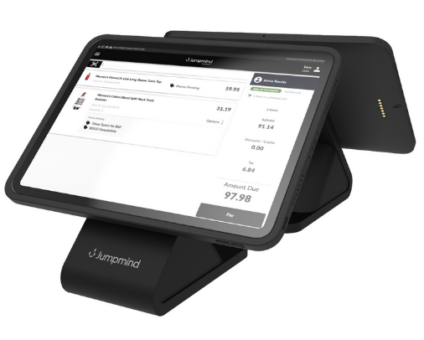Retailers are constantly looking for new ways to generate revenue and stay competitive. One strategy …
JumpMind Releases Metl Data Integration Tool
Metl version 3.3 integrates data of any type in real-time with code-free, drag and drop flows.
Columbus, Ohio – December 6, 2018 –
JumpMind, a leading provider of data integration software, announced today the availability of Metl version 3.3, a lightweight data integration tool capable of processing data of any type and size with a friendly, drag and drop web interface. Metl is easy to download and install on-premise or in the cloud, where users connect to its web interface to build data integrations.
“With the availability of integration tools and frameworks, the days of needing to custom code most integrations are long gone,” said Greg Wilmer, President and CEO of JumpMind. “Metl was created out of our customers’ desires to have a consistent, proven, and open integration tool that takes care of all the major plumbing, while allowing the developer to configure integrations in a fraction of the time it would take to code them.”
Metl means message-based extract, transform, and load, because source data is extracted into units of work that are passed through components to transform and load a target system. Using streams of data enables efficient processing of large data sets and faster processing through parallelism. Data of any type can be processed, including databases, flat files, web services, and message queues. Each integration is drawn on screen by connecting components together to read, process, and write data. More than 50 components are included. Wilmer said, “Metl really differs from other tools in several areas. Because it’s open, you can dig in and see what’s happening behind the scenes, and if it doesn’t have a pre-built component needed, you can create your own and plug it in.”
The web interface has 5 main views to manage data integration. The Design view is where flows are built, tested, and debugged by interactively building and running them. The Deploy view is used to schedule flows to run on one or more agents. The Manage view can monitor the results of flows being run. The Explore view allows browsing of resources like databases and file systems. Overall system settings are controlled in the Admin view. Wilmer said, “It’s one hundred percent web-based. Deploy it locally, or to a private or public cloud. It doesn’t require huge infrastructure or a team to install. Simply download the installer and run, or deploy to your own web container.”
Metl can move and combine data from disparate sources for multiple use cases. Consolidating data with a canonical model for Master Data Management links core data into a single reference for the enterprise. Sourcing data into a single application database can support the function of an application, such as a merchandising system. Building a central repository from multiple areas of the business into a data warehouse can provide business intelligence. Migrating data from one storage type to another can upgrade systems, clean data for quality, and reformat data. A complete data integration strategy using Metl can deliver clean, enriched data that is meaningful and valuable.
About JumpMind
JumpMind is an open source software company specializing in data integration and database replication software for the enterprise. We help companies build integration solutions that combine data from disparate sources into meaningful and valuable information. Our mission is to build software that is effective, open, and easy to use. We provide consulting, training, and support for our software products. See how JumpMind solves data integration by visiting http://www.JumpMind.com.











